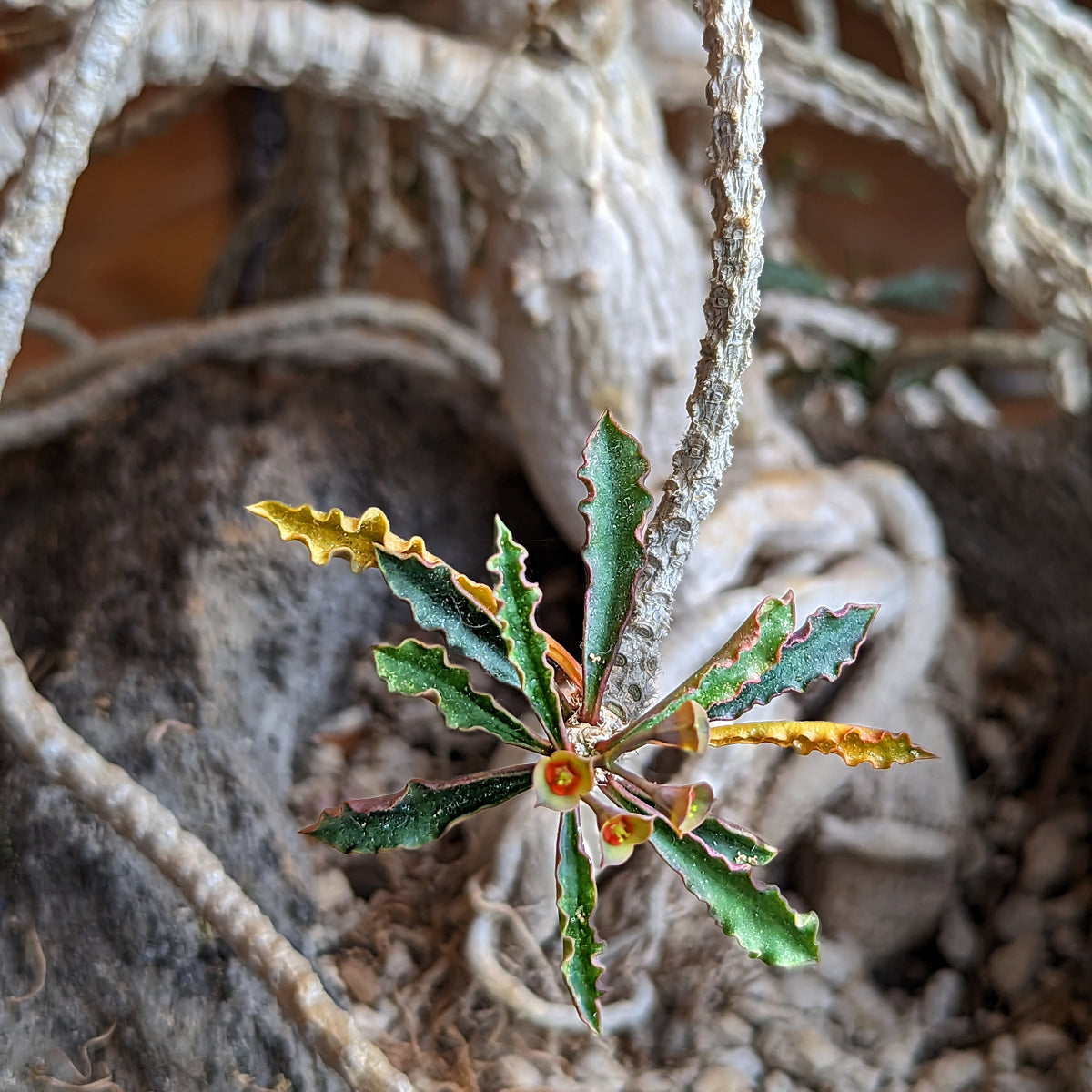
Madagascar is known for its rich biodiversity and is home to a variety of unique succulent plants, including several species of Euphorbia. Many succulent euphorbs in Madagascar are threatened by habitat loss, overgrazing, and collection for the horticultural trade.
Madagascar Euphorbs are part of the Euphorbia family, which is one of the largest and most diverse plant families in the world. The Euphorbia most people are familiar with is poinsettia, a popular ornamental plant that is native to Mexico and used as decoration during the holidays. I recently had lunch with an old friend who asked "What's up with the genus Euphorbia anyway? Isn't it too big?" I replied YES! The genus is probably too large and all encompassing and should be subdivided. Euphorbia pulcherrima (Poinsettia) probably should not be in the same genus as Euphorbia obesa. But I digress. Let's return to the subject at hand.
The most well known of Madagascar's succulent Euphorbs is Euphorbia milii, widely grown as an ornamental plant in many parts of the world. My mom had a giant one when I was growing up.

It is estimated that there are over 170 species of succulent euphorbias found in Madagascar. Obviously I can't cover them all here and instead will show a few that I have in my collection:

Euphorbia platyclada was one of the first succulents I purchased from a plant sale at UC Davis arboretum in the early 1990s, and its weirdness sparked my interest in collecting succulents. It's a plant I still cherish. E. platyclada does not have leaves in the traditional sense. Instead, it has flattened, stem-like branches that resemble sticks. These branches perform the photosynthetic function of leaves, allowing the plant to produce energy from sunlight. The lack of traditional leaves is a common feature of many succulent plants. E. platyclada is almost always in flower but the flowers are small and nondescript.
It's easy to grow and the stems have a beautiful mottled pink-brown patina that changes hues with the seasons.

If people are interested I can list some for sale this year. I have made some potential polyploid forms that have larger stems and a more upright growth habit.
Euphorbia decaryi is a small, compact plant with a thick, cylindrical stem that is covered in short, spine-like projections.

Euphorbia capsaintemariensis has a somewhat similar look to decaryi but has smaller leaves, a bushier growth habit and forms a larger caudex ( a thickened bulbous or woody stem that found in some succulents). The plant below is one I have had for many years. The planter is a large carved piece of pumice that was birthday gift from a good friend.




